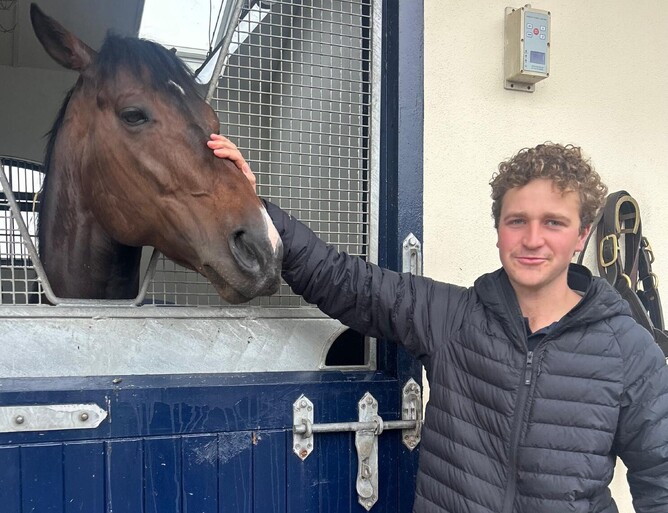I touched down in Ireland at around 6am on Saturday, the 22nd of February, and it didn’t take long to jump straight into the thick of things.
On the Sunday, I was off to my first point-to-point at Lisronagh — and let’s just say it brought back vivid memories of many racecourses back home in the middle of July. It was well beyond a Heavy 10! Mud everywhere, soaked jackets, and determined horses and riders braving the elements — a true Irish welcome that felt both chaotic and fascinating.
Since then, my time at Coolmore Stud has been a blend of fun, learning, and a few laughs along the way. The day-to-day work was surprisingly easy to settle into thanks to the routines and structure that keep the place running like a well-oiled machine. Every detail is accounted for, and it’s clear that nothing is left to chance when you’re working on a farm of this calibre.
That said, it still took me a little while to get the hang of mucking out straw boxes. At first I was convinced that straw boxes were only used to keep you warm in the Irish weather. I was given a bit of extra incentive to tackle the straw boxes by Mum (Lisa Latta) who claimed that she used to be the best at mucking them out. After being here for 8 weeks, I now think that I would give her a run for her money.
I’ve been based in Walsh’s Barn, where I’ve been working with mares and foals — easily one of the most rewarding parts of my time here so far. Being around the mares daily, watching them care for their foals, and being involved in everything from feeding to vet work has been an invaluable experience. One of the true highlights has been working with Treve, the incredible mare who won back-to-back Prix de l’Arc de Triomphes. She has a lovely Wootton Bassett colt at foot and is returning to him again this year, with his service fee now sitting at a mere €300,000. It is surreal to be around such equine royalty, and it really drives home the global reach and quality of the horses here.
Outside of the barn, I’ve also been helping out a couple of nights a week in the teasing shed. This part of the process involves getting mares ready for covering — teasing them and scanning their microchips to confirm identification and paperwork. It’s been a great insight into another aspect of stud work, and I’ve learned a lot about the finer details of the breeding process — from planning and timing, to managing behaviour and ensuring everything is logged and verified properly.
On the weekends, I’ve had the chance to explore a bit of the local racing scene. I’ve been lucky enough to visit the races at both Leopardstown and Cork, and both had a fantastic atmosphere. Leopardstown in particular was a standout — a modern track with a buzzing crowd and a quality lineup of horses. Watching Irish racing in person has given me a broader perspective on how the sport is run here, and it’s been a great contrast to racing back home in New Zealand.
This past weekend, a few of us from Coolmore had the opportunity to head down to Castlehyde, another of Coolmore’s properties, for a tour of their stallions. It was awesome to see some familiar names like Starspangledbanner and Holy Roman Emperor, both of whom have sired good horses in the Southern Hemisphere. My personal favourite was Calyx, a young sire with a lot of potential. I’d previously worked with a lovely Calyx gelding at the Ready to Run Sales with Riversley Park, who sold for $375,000 — so it was a cool moment getting to see him in the flesh.
Looking ahead, I’m heading to the foaling unit at Prospect for a couple of weeks, which I’m really excited about. It’ll be a different pace and a new environment, and I’m looking forward to getting even more hands-on with the foaling process and learning from the experienced team there. After that, I’ll finish up my time in Ireland with a stint in the stallion yard, which feels like a fitting way to round out this part of the scholarship. I’m hoping to soak up as much knowledge as I can before heading on to the next leg of the journey.
This experience has already been everything I hoped for. I’ve met some incredible people, worked with world-class horses, and learned so much — not just about stud work, but also about the global racing and breeding industries. There’s still plenty more to come, and I’m looking forward to making the most of every moment.


